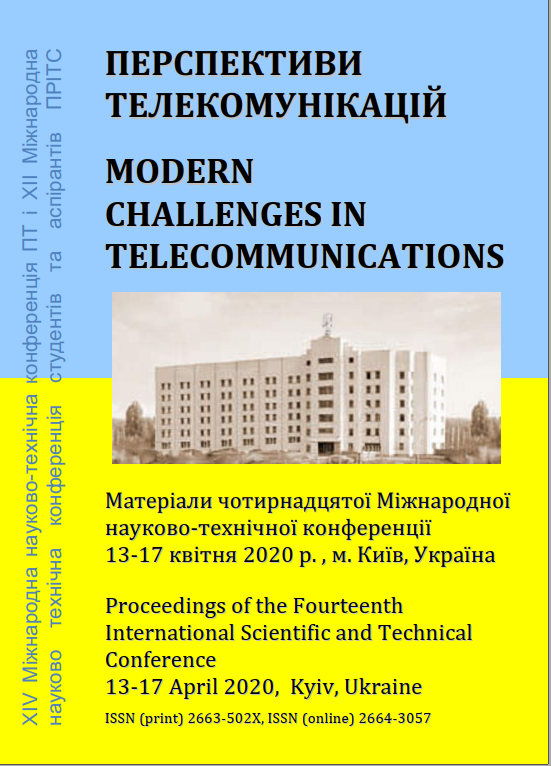ПІДХОДИ ЩОДО РОЗРОБКИ РЕКОМЕНДАЦІЙ ПО ВИБОРУ ВИДУ ЛІНІЙНОГО СИГНАЛУ В МЕРЕЖАХ ДОСТУПУ SHDSL
Ключові слова:
технологія SHDSLАнотація
У мережах доступу, що у якості середовища передачі використовують мідний кабель, є поширеною технологія SHDSL. Сучасне обладнання SHDSL має можливість при конфігуруванні вибирати різни варіанти лінійного сигналу виду РАМ, від ТС-РАМ16 до ТС-РАМ128. Тому актуальною задачею є розробка рекомендацій щодо вибору виду модуляції. Деякі підходи до вирішення цієї задачі наведені у даній доповіді.
Approaches concerning the recommendation for choosing
of the line signal type in SHDSL access networks
In access networks based on copper cable, SHDSL technology is widely used. SHDSL equipment has the possibility to choose PAM line signal with different constellation. However, in existing manual you do not find clear rules concerning the choosing of line signal depending of conditions for using the equipment. This report is devoted to finding the approaches for such recommendations.
Посилання
ITU-T Recommendation G.991.2, 2003.
В.А. Балашов и др.. Технологии широкополосного доступа xDSL – М.: Эко-Трэндз,2009. 256с.: ил.
Cable reference models for simulating metallic access networks. ETSI STC TM6.
##submission.downloads##
Як цитувати
Номер
Розділ
Ліцензія
Авторське право (c) 2020 Вячеслав Іванович Носков

Ця робота ліцензується відповідно до Creative Commons Attribution 4.0 International License.
Authors who submit to this conference agree to the following terms:a) Authors retain copyright over their work, while allowing the conference to place this unpublished work under a Creative Commons Attribution License, which allows others to freely access, use, and share the work, with an acknowledgement of the work's authorship and its initial presentation at this conference.
b) Authors are able to waive the terms of the CC license and enter into separate, additional contractual arrangements for the non-exclusive distribution and subsequent publication of this work (e.g., publish a revised version in a journal, post it to an institutional repository or publish it in a book), with an acknowledgement of its initial presentation at this conference.
c) In addition, authors are encouraged to post and share their work online (e.g., in institutional repositories or on their website) at any point before and after the conference.

